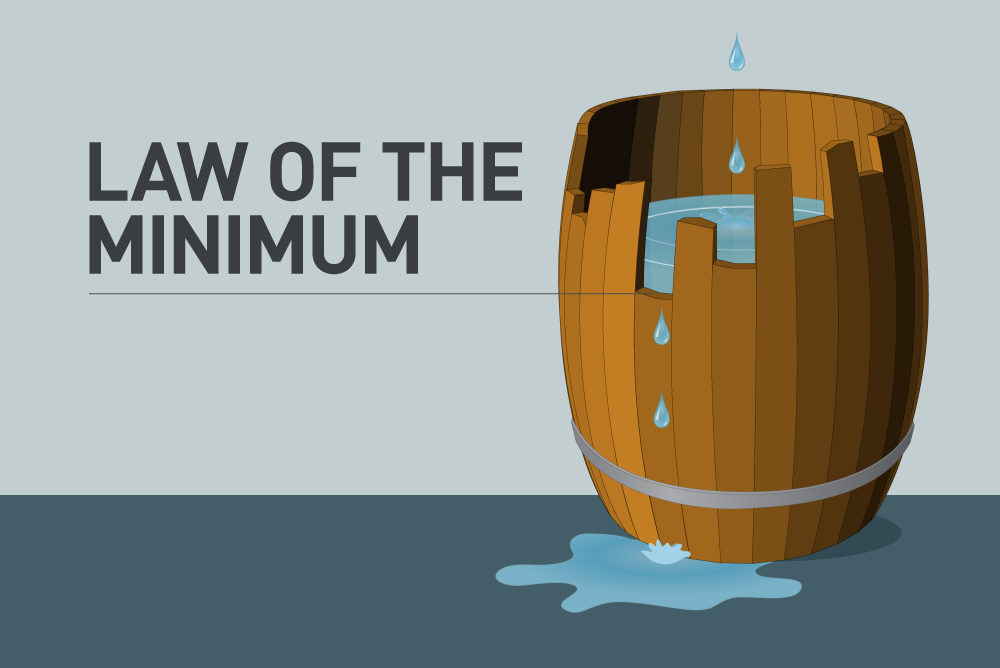
Agricultural nutrient profile: micronutrients-part 3
Micronutrient deficiency and yield: law of the minimum
Growers can go to great lengths to ensure their plants have ample supplies of available macronutrients (NPK) – yet see their efforts undermined if they have a micronutrient deficiency. That is because the relationship between micronutrient deficiency and yield is just as important as that between macronutrients and yield.
This is explained by The Law of the Minimum, an important agricultural principal that emphasizes the need for a comprehensive and integrated approach to nutrient management. One that focuses equally on macronutrients, secondary nutrients and micronutrients.
While the Law of the Minimum includes water, sunlight, soil and other growth factors, we will focus our discussion on nutrients.
The Law of the Minimum
In the 19th Century, a German scientist named Justus von Liebig studied the inter-relationship between nutrients and other factors that affect plant growth and yield. His Law of the Minimum (also known as Liebig’s Law) came to a surprising conclusion: growth is not dictated by total resources available, but by the scarcest resource – which serves as a limiting factor.
This means that if one of the essential nutrients required for plant growth is deficient, plant growth will suffer even if all other essential nutrients are widely available.
May your barrel always be full!

Liebig’s Barrel helps illustrate the Law the Minimum, and correlation between micronutrient deficiency and yield.
A common way to explain Liebig’s Law is through the analogy of a wooden barrel (known as Liebig’s barrel).
Let’s say the water represents yield, and each stave represents a nutrient. Optimum yield occurs when the barrel is full to the top.
In this analogy, a nutrient deficiency is represented by shortening a stave. It doesn’t matter if that stave is a macronutrient such as nitrogen or a micronutrient such as boron: the water (yield) will drain to the level of the lowest stave. That drop in water level equates to lost yield!
This explains that while plants require far greater amounts of macronutrients than micronutrients, a deficiency of ANY individual nutrient will limit overall yield.
In-crop fertilizers (including specialty nutrient aids) can provide micronutrients to the plant at strategic growth stages where they are in greater demand. In the case of a serious deficiency, it may be worth looking into building levels in the soil over multiple seasons.
The importance of nutrient planning beyond NPK.
High-performance growers understand the relationship between micronutrient deficiency and yield potential. Today’s agronomically-informed fertility programs are helping these producers reach beyond basic NPK strategies – and to focus on a comprehensive nutrient management approach.
In our previous blog, we reviewed four micronutrients that are prone to deficiency: zinc, boron, copper and manganese. Based on what we’ve learned today, we encourage you to go back and re-acquaint yourself with signs and causes of deficiency discussed earlier in this series, and to pay attention to how the presence of some nutrients can impact the availability of others.
Understanding the Law of the Minimum will help you maximize production.
Having a firm grasp on the importance of all soil nutrients – big and small – is part of a sound agronomic strategy for growth.
Regular soil and tissue tests, in conjunction with a comprehensive nutrient management plan, can help you ensure your barrel is always full.
